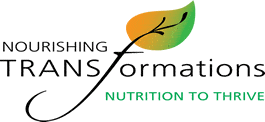Ever wonder if environmental toxins could be causing you health issues – either now or potentially in the future? Listen to my most recent podcast interview here with Lara Adler and be ready to take action.
The Alarming Truth About Environmental Toxicants
Did you know there are about 350,000 chemicals and chemical mixtures registered globally? This staggering number, recently highlighted in the podcast, is three times higher than previous estimates. It’s a wake-up call to the sheer scale of chemical exposure we face daily, something we rarely think about but significantly impacts our health and wellbeing.
How Endocrine Disruptors Affect Us
The conversation with Laura Adler brings into focus the concerning world of endocrine disruptors. These are chemicals that, even in small doses, can wreak havoc on our hormonal systems. They are linked to a number of health issues ranging from obesity to reproductive problems. The scariest part? They are present in many common household items, from plastics to personal care products.
The Myth of “Safe Levels” of Chemicals
A critical takeaway is the challenge to the traditional toxicology perspective that “the dose makes the poison.” Laura Adler points out that even low-level exposure to certain chemicals can have significant health impacts, a fact often overlooked in safety assessments. This revelation calls for a reevaluation of how we perceive and regulate chemical safety.
List of Environmental Toxins
Here’s a list of some of these environmental toxicants, emphasizing their widespread presence and potential health impacts:
- Bisphenol A (BPA): Found in polycarbonate plastics, canned food linings, thermal paper, and certain dental sealants. BPA is known for its endocrine-disrupting properties, affecting hormonal balance and potentially leading to various health issues.
- Phthalates: These are used to soften plastics and are also found in many personal care products like shampoos, nail polishes, and perfumes. Phthalates can disrupt hormone function and have been linked to reproductive and developmental problems.
- Volatile Organic Compounds (VOCs): Commonly found in paints, varnishes, air fresheners, and cleaning products. VOCs can cause respiratory irritation and long-term health effects when inhaled.
- Perfluoroalkyl and Polyfluoroalkyl Substances (PFAS): Used in non-stick cookware, water-repellent fabrics, and firefighting foams. These chemicals are persistent in the environment and have been associated with various health risks, including cancer.
- Parabens: Widely used as preservatives in cosmetics and personal care products. Parabens can mimic estrogen and have been linked to reproductive issues and possibly cancer.
- Heavy Metals (like Lead and Mercury): Found in certain paints, batteries, and industrial emissions. These metals can accumulate in the body over time, leading to neurological and developmental disorders.
- Pesticides: Used in agriculture and home gardening, pesticides can remain as residues on food and in the environment. They can impact the nervous system and have been linked to various health problems, including cancer and hormonal disruptions.
Practical Steps Towards a Toxin-Free Life
Feeling overwhelmed? The podcast doesn’t just highlight the problems; it offers small, manageable steps toward reducing your toxic load:
| Step | Action | Details |
|---|---|---|
| 1 | Avoid Scented Products | Stop using scented items in your home, such as air fresheners and scented candles, to reduce exposure to volatile organic compounds and other chemicals. |
| 2 | Replace Kitchen Utensils | Swap out plastic kitchen utensils, especially those made of black nylon, with alternatives made of wood or stainless steel. |
| 3 | Choose Safer Personal Care Products | Gradually switch to personal care products that are free from harmful chemicals like parabens, phthalates, and sulfates. |
| 4 | Use Non-toxic Household Cleaners | Replace conventional cleaning products with those that have natural, non-toxic ingredients to minimize chemical exposure. |
| 5 | Be Mindful of Plastics | Reduce the use of plastics, particularly those containing BPA, and opt for glass or other safer materials for food storage and water bottles. |
Conclusion: Empowerment Through Knowledge
The “NANP Nourishing You Podcast” with Laura Adler is more than just a discussion; it’s a call to action. It empowers us with knowledge and tools to make healthier choices in our daily lives. Remember, understanding the problem is the first step toward solving it. Let’s embrace this journey towards a healthier, toxin-free lifestyle together.

